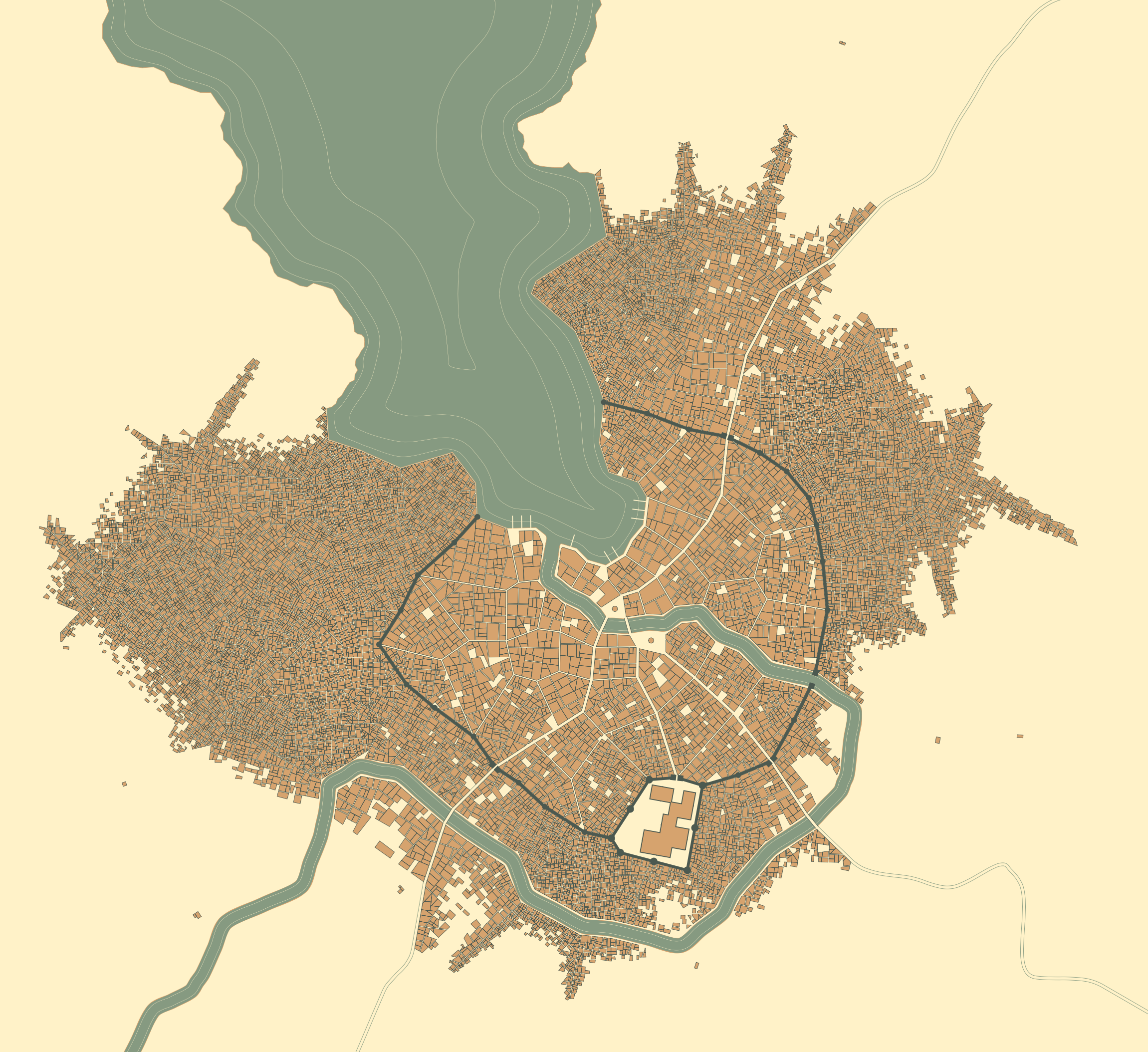Agad
In the Ponthean year 185 this city was built upon the last battlefield of the eight largest tribes of the eastern continent. Warchief Mugon Halsnar called an end to the bloodshed over the land and worked out a treaty with the other leaders. To commemorate all the numerous fallen warriors, the tribes decided to erect a new united city around their graves, the graveyard still nestled deep inside the heart of today's Agad.
After all was settled, and the construction of a first fort had finished, the council of elders elected warchief Mugon Halsnar as their leader, marking the beginning of the Halsnar Dynasty. The developing township was forth named the City of the Eight, or Agad. The current ruling monarch of Agad is King Elisos Jolur Halsnar III.
Agad quickly grew under the constant stream of scattered smaller clans coming in for the promise of prosperity and a peaceful life, small and large families torn apart and decimated by many years of war between the large tribes. Soon the surrounding land recovered from the signs of warfare and the Agadian citizens learned to utilise the fertile soil of the area.
After the ultimate demise of the remaining elders, Mugon's first daughter, hence named Queen Danar Mugon Halsnar I, called into office a council of influential citizens to oversee the financials of Agad, leading to the establishment of a tax and welfare system.
The pride of Agad is the royal army, the Horde. In tradition with warchief Mugon's band of warriors, the Horde does not show strength in numbers, but consists of relatively few highly skilled troops, meant to win battles with cunning strategy and diplomacy if possible. The life as a Gilded Fang, a very elite division within the Horde, is one of the most prestigious professions a man or woman in Durnas could achieve, and many young people travel to Agad to try and join the ranks of the military, often with disappointing results.
With the amount of people still traveling towards the city and settling there, the number of buildings and shacks outside the city walls is constantly growing. Despite the low life standard of many such people, given enough coin by the council to afford sustenance, criminality within the city is very low, people fearing and respecting the watchful eyes and sharp blades of the Horde patrols.
Pushed to the edge of the inner city sits a single temple to Deon of the Church of the Enlightened Path, a very pacifist order that prefers to solve conflicts by talking instead of weaponry or imprisonment. The Enlightened have a habit of buying free prisoners and converting them to faith. For their philanthropic work, the order gets a lot of support from many patrons in the city, who are unhappy with needless military tax spendings in the current times of peace.
Demographics
The populace of Agad is mainly human. Other species originally came from outside to study, artisanship or to join the military for easy money.
Government
Since founding under rule of the Halsnar Monarchy, with taxes on trade. An elected city council is responsible for deciding where the tax money goes (after cuts for the military).
Defences
Surrounded by both the river and strong city walls, the fortress is nestled in a very tactical position. The city military is small but elitist (infantry /w firearms, cavalry, siege weapons), offering good payment for those that make it into the ranks, making it an attractive profession for many commoners. The way into the harbour is riddled with sea mines, visiting ships are escorted by the military from the entry point.
Industry & Trade
Agad is well known for metalwork and weaponry, less for things with magical properties. There are a few stores owned by wizards from Ponthas, although supplies are slow and hard to get.
Infrastructure
The river that winds through the city is very frequented, there are even snack carts set up at the sides for boats to stop by.
Natural Resources
The fields around the city are very nutrient-rich, agriculture is blooming and food isn't an issue in the city. Metals and wood are shipped from inland, forming the main income for smaller towns and villages. The city council sees to that the prices stay stable.
Type
Large city
Population
25000
Location under
Included Locations
Owner/Ruler
Owning Organization



